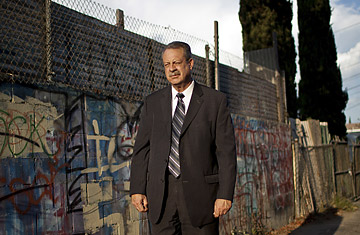
(2 of 7)
Then, 23 years after the first murder, a veteran homicide detective named Dennis Kilcoyne teamed up with a state forensics expert to solve the case using a sophisticated new analysis known as familial DNA searching. It enables cops, under certain circumstances, to track down a suspect by cross-referencing a DNA sample from a parent, sibling or child, often without the relative's knowledge. The test, which has been used in Britain for nearly a decade, raises the possibility of breakthroughs in a number of unsolved crimes in the U.S. But it is also stirring up controversy in all branches of law enforcement for its startling challenges to individual privacy. Four states have already okayed the use of intrafamily DNA searches, which means it won't be long before the courts take up the question of whether it is appropriate to use DNA obtained from one family member to find another. "You are going to have a bunch of people say, 'That's good law enforcement. They found the bad guy,'" says John Copacino, a Georgetown University law professor who specializes in criminal procedure. "But you are also going to have some folks who say that this is a little scary, a little Orwellian, when it comes to privacy concerns."
The One That Got Away
Lonnie David Franklin Jr. had lived much of his life on the wrong side of the law. He was first arrested, for car theft, in 1969, at age 16. His rap sheet shows he was arrested 15 more times over three decades, for burglary, assault with a deadly weapon, carrying a loaded firearm, possession of burglary tools. But his crimes were never serious enough to get him time in state prison. After a stint in the Army, Franklin got married and settled down in the house on 81st Street, half a block east of Western Avenue. His wife worked for a local school district, and they had two children. (They are still married, and she visits him in jail.) From 1982 to 1989, he drove a city sanitation truck, collecting trash from the streets and alleyways around Western Avenue.
Franklin was popular with his neighbors. He knew how to fix cars, and he sold refrigerators and flat-screen televisions for conspicuously low prices. He was a Robin Hood figure in a neighborhood that never had a lot of heroes, which may be why neighbors ignored his habit of chatting up the women along Western at night. "I would talk to him on the street all the time. He even gave me a Christmas present," says Joe Cole, 62, a retired warehouse guard who lives across the street from Franklin's house.
The 7100 block of Western Avenue, where Ware lived in 1987, was in the middle of one of the main crack-cocaine drags in South L.A. Every night, young men cruised up and down the road, blasting rap music out their car windows, buying and selling "rock" and checking out the women who worked the sidewalks to pay for their next hit. Ware, who was 23 and had a 4-year-old daughter, waitressed a bit but soon got sucked into the sordid world outside her front door. "We tried to get her off drugs. We had not too much success," says her stepmother Diana Ware. "It was kind of a rough period." L.A. was averaging over 1,000 murders a year, three times as many as in 2010.
